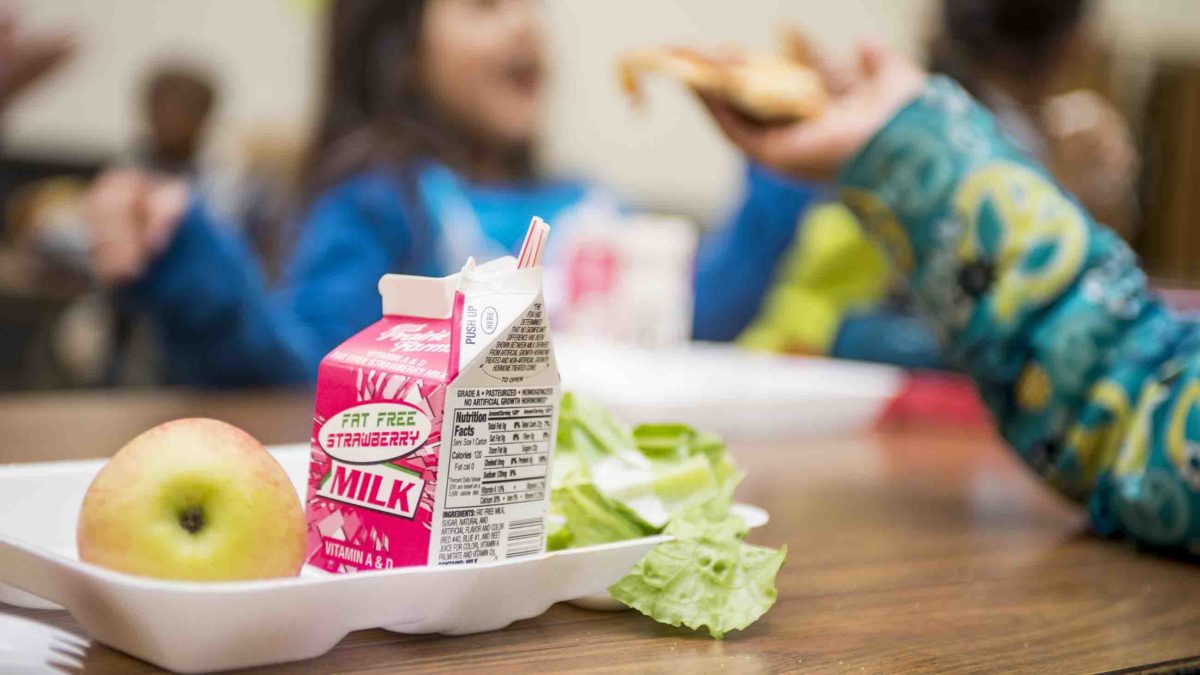Study: Students Come to Accept Healthier School Meals
A new study has provided the strongest scientific support to date for a five-year-old initiative to improve nutrition standards for school meals in the United States — part of the former first lady Michelle Obama’s efforts to combat childhood obesity. The new standards were set in motion by 2010 legislation that provided funding and set new guidelines for all of the nation’s core child nutrition programs, including the National School Lunch Program and the School Breakfast Program.

Federally subsidized school lunches were made healthier under Obama-era legislation, though critics have derided the move as counterproductive. A new study suggests otherwise.
Visual: Ann Hermes/The Christian Science Monitor via Getty
The bill, called the Healthy Hunger-Free Kids Act, set minimum requirements for inclusion of fruits, vegetables, and grains; reduced portion sizes; set limits on sodium, sugar, and fat; and provided resources to encourage use of local produce, among other reforms.
But the legislation drew criticism from Republicans, the food industry, and eventually a professional organization representing tens of thousands of the nation’s school cafeteria workers — which had originally been in support of the changes. Students simply weren’t eating the newly revised lunches, critics said, or they were throwing out the added fruits and vegetables, leading to more food waste. A 2012 viral video complained that the meals’ reduced calorie count — aimed in part at addressing the rising U.S. childhood obesity rate — was leaving teens hungry.
The criticisms accompanied a small but measurable dip in the number of schools that participated in federally subsidized meal programs. But the new study, conducted by researchers at Rutgers and Arizona State University and published last month in the American Journal of Public Health, suggests that those numbers have likely recovered, and that the same percentage of students who were eating less nutritious meals before the Obama-era bill are now eating healthier food.
Using data collected in four New Jersey public school districts for a seven-year span that includes four years before and three years after the launch of the Healthy Hunger-Free Kids Act, the researchers found that daily school lunch participation among students across the period actually remained steady at around 70 to 72 percent. Daily school breakfast participation increased from 52 percent to 60 percent. In both cases, participation recovered to pre-program levels after a dip of a percentage point or two during the first year the healthier meals were served.
The study, which was funded by the Robert Wood Johnson Foundation and the Eunice Kennedy Shriver National Institute of Child Health and Human Development, drew from about 130 schools, with mostly low-income and minority students.
The findings land at precisely the moment when the Trump administration and Republicans in Congress are seeking to undo some of the legislation’s core provisions or other programs that support low-income children and families. In a rule announced earlier this year and published last week, for example, the U.S. Agriculture Secretary Sonny Perdue rescinded aspects of the program, allowing schools to offer flavored, one-percent fat milk, to serve foods made with less-healthy, refined grains, and to postpone sodium reductions. The rule joins a long list of Trump administration attempts to dismantle Obama-era policies.
Punam Ohri-Vachaspati, a co-author of the new study and a professor at Arizona State University’s School of Nutrition and Health Promotion, says she hopes the new findings will help prevent further rollbacks. “What our paper shows is that children do participate in these healthier meals,” she said. “I think it’s important to put it out there before there are more changes made and the guidelines are watered down even more.”
Of course, one might hope for a stronger signal than the study’s relatively flat line for children’s consumption of healthier school meals, but Ohri-Vachaspati says she isn’t worried. “As children are exposed to these kinds of meals, we’re going to see a lot more acceptance and a lot less wastage as time progresses,” she said.
For now, the school meals are almost certainly healthier than the standard diet American children receive at home — especially in light of a new finding from researchers at Harvard School of Public Health and George Washington University. An estimated six in 10 children today will be obese by age 35 if current trends continue, according to the November 30 report in the New England Journal of Medicine.
That’s a troubling figure even if it slimmed down by half.










